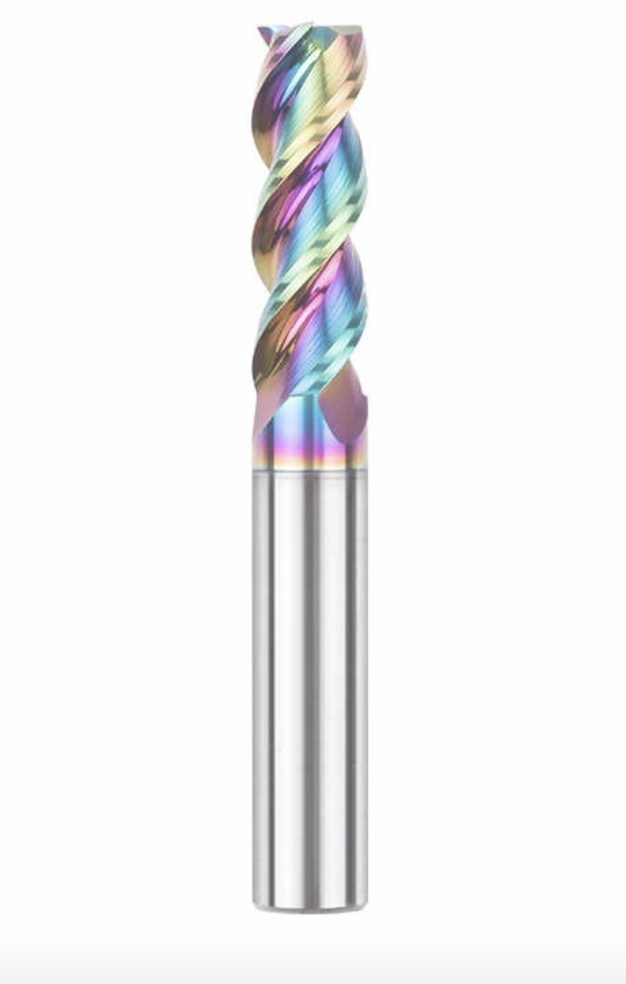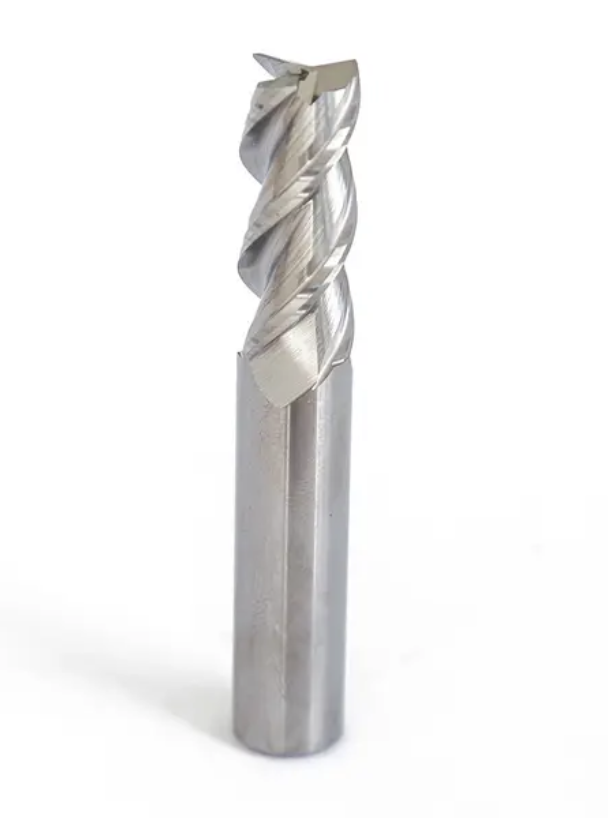Choosing the Right End Mills for Aluminum
Aluminum is a popular material in manufacturing. Its lightweight nature and resistance to corrosion make it a preferred choice for many industries.
However, machining aluminum presents unique challenges. Its softness and tendency to stick to cutting tools can lead to material wastage and tool damage.
Choosing the right end mills for aluminum is crucial. The right tools can enhance manufacturing efficiency and product quality.
This guide will delve into the key features of end mills designed for aluminum. We'll discuss flute count, helix angle, and coatings, among other aspects.
We'll also explore how Changzhou Hiboo Tools Co., Ltd, a high-tech enterprise near Shanghai, ensures the quality and reliability of its cutting tools.
By the end of this guide, you'll have a deeper understanding of how to select the most suitable end mills for aluminum.
Understanding Aluminum's Machining Challenges

Aluminum's appeal lies in its lightweight characteristics and resistance to corrosion. Yet, machining this metal poses distinct challenges due to its properties.
One primary issue is aluminum's softness, leading to potential deformation during cutting operations. This requires careful tool selection to avoid inaccuracies.
Also, aluminum's tendency to adhere to tools can create build-up on cutting edges. This can impair performance and shorten tool life.
To address these challenges, consider these factors:
Tool material and hardness
Surface coatings to reduce friction
Suitable helix angles and flute counts
Understanding these aspects helps in selecting the right tools and achieving optimal manufacturing outcomes with aluminum.
Key Features of End Mills for Aluminum

Selecting the right end mills is crucial for effective aluminum machining. Specific features greatly influence performance and tool longevity.
Firstly, consider the material of the end mill. Carbide end mills offer excellent hardness and heat resistance, making them ideal.
The flute count is another critical factor. More flutes provide a smoother finish, but can also hinder chip evacuation.
Key features to prioritize include:
The appropriate flute count for your application
High helix angles for better chip removal
Coatings that reduce material adhesion
By understanding these aspects, you can enhance both efficiency and productivity in your machining processes.
Flute Considerations
Flute design impacts chip evacuation and surface finish. A balance is essential for optimal performance.
End mills with two or three flutes are common for aluminum due to efficient chip clearance. They prevent clogging and minimize material adherence.
The right choice ensures smooth cutting without sacrificing tool integrity, enhancing machining results significantly.
Helix Angles and Their Impact
Helix angles play a vital role in machining aluminum. A higher helix angle can improve chip evacuation efficiency.
These angles help in reducing heat buildup, vital for maintaining the tool's condition. This minimizes wear and prolongs tool life.
Choosing the correct helix angle is crucial to achieving a clean and precise finish, enhancing both quality and efficiency.
Importance of Coatings
Coatings on end mills prevent material adhesion and extend tool life. Zirconium Nitride (ZrN) is a popular choice.
Such coatings reduce friction, leading to cooler, more efficient cutting processes. This is especially beneficial for aluminum's sticky nature.
Using coated end mills helps maintain sharp edges. This results in superior performance and longer-lasting tools in your manufacturing operations.
Selecting the Right End Mill Geometry
The geometry of an end mill is fundamental in determining its machining efficiency. Choosing the correct geometry ensures optimum performance.
The right end mill geometry can significantly impact surface finish and precision. For aluminum, a sharp cutting edge is crucial.
Sharpness reduces material adhesion, maintaining the tool's effectiveness. This is especially important for achieving high-quality finishes.
Geometry affects chip evacuation, which is vital for preventing tool clogging. Proper selection enhances productivity and tool life.
An appropriate end mill geometry ultimately results in smooth, efficient machining with minimal downtime and maintenance needs.
3 Flute Square End Mills for Balance
For aluminum, 3 flute square end mills strike an ideal balance. They combine smooth finishes with effective chip evacuation.
These end mills offer sufficient space for chip clearance, reducing the risk of clogging. They maintain a consistent cutting quality.
This balance is essential for achieving both high efficiency and precision in machining aluminum parts, optimizing overall productivity.
Corner Radius End Mills for Durability
Corner radius end mills add durability to cutting tools. They prevent sharp edges from chipping during high-speed operations.
The rounded corners provide a stronger cutting edge, enhancing tool life and reliability. This durability is crucial in demanding applications.
Using corner radius end mills for aluminum also ensures smoother transitions, reducing stress on the tool and improving part quality.
Maximizing Tool Life and Performance
Tool life and performance are critical in machining operations. Extending tool life reduces costs and improves efficiency significantly.
Proper tool management involves understanding optimal machining parameters. Speed, feed rates, and depth of cut are essential factors to consider.
Using cutting tools in the right conditions ensures maximum lifespan and consistent performance. It's a balance of tool care and process optimization.
Regular inspection of tools can prevent unexpected failures. Predictive maintenance strategies help keep operations smooth and uninterrupted.
Investing in high-quality tools like those from Changzhou Hiboo Tools Co., Ltd. ensures long-term gains through reduced downtime and superior performance.
Tool Paths and Coolant Use
Efficient tool paths are vital for maximizing end mill performance. They help reduce unnecessary tool wear and enhance machining accuracy.
Appropriate use of coolants is key in managing heat generated during cutting. Effective cooling prolongs tool life and improves surface finish.
Integrating optimal tool paths with strategic coolant application leads to better machining outcomes and ensures the longevity of the end mills.
Toolholder System and Vibration Reduction
A stable toolholder system is crucial for minimizing vibrations. Vibrations can negatively impact both tool life and machining quality.
Properly balanced toolholders reduce run-out, ensuring consistent cutting performance. They are essential for precision in high-speed operations.
Implementing an efficient toolholder system enhances overall machine stability, preserving both the quality of the machined parts and the cutting tools involved.
Ensuring Consistent Quality with Changzhou Hiboo Tools Co., Ltd
At Changzhou Hiboo Tools Co., Ltd, quality takes precedence. Our tools are crafted with care and precision.
Each tool undergoes thorough inspections. These rigorous checks ensure they meet high-performance standards.
We use only the finest materials. This guarantees our tools are durable and reliable for our customers' needs.
Quality is not just a promise but a practice. It’s ingrained in every aspect of our production process.
Partnering with us means receiving both top-tier products and unwavering support, fostering success in your manufacturing operations.
Our End mills for Aluminum
View More products
Rigorous Inspection and High-Quality Materials
Our inspection process is meticulous. Every detail is evaluated to uphold tool integrity and performance.
We select premium materials, enhancing durability and tool life. This commitment results in superior cutting results.
Our dedication to quality is unwavering. It assures manufacturing engineers receive tools that perform consistently and effectively.
Customized Solutions and Technical Support
Every manufacturing challenge has a unique solution. At Changzhou Hiboo, we offer tailored tool solutions to meet specific needs.
Our technical team is always ready to assist. They provide expert guidance to optimize tool usage and performance.
By choosing us, you access unparalleled support and customized products, essential for achieving exceptional manufacturing outcomes.
English
العربية
Français
Русский
Español
Português
Deutsch
italiano
日本語
한국어
Nederlands
Tiếng Việt
ไทย
Polski
Türkçe
ພາສາລາວ
ភាសាខ្មែរ
Bahasa Melayu
ဗမာစာ
Filipino
Bahasa Indonesia
magyar
Română
Čeština
Монгол
қазақ
Српски
हिन्दी
فارسی
Slovenčina
Slovenščina
Norsk
Svenska
українська
Ελληνικά
Suomi
Հայերեն
עברית
Latine
Dansk
বাংলা
Hrvatski
Gaeilge
Oʻzbekcha
latviešu
Беларуская мова
Български
Lietuvių
Gaelo Albannach
ئۇيغۇرچە
Cymraeg



















